Home » Foraging » How to Make Homemade Maple Syrup
How to Make Homemade Maple Syrup
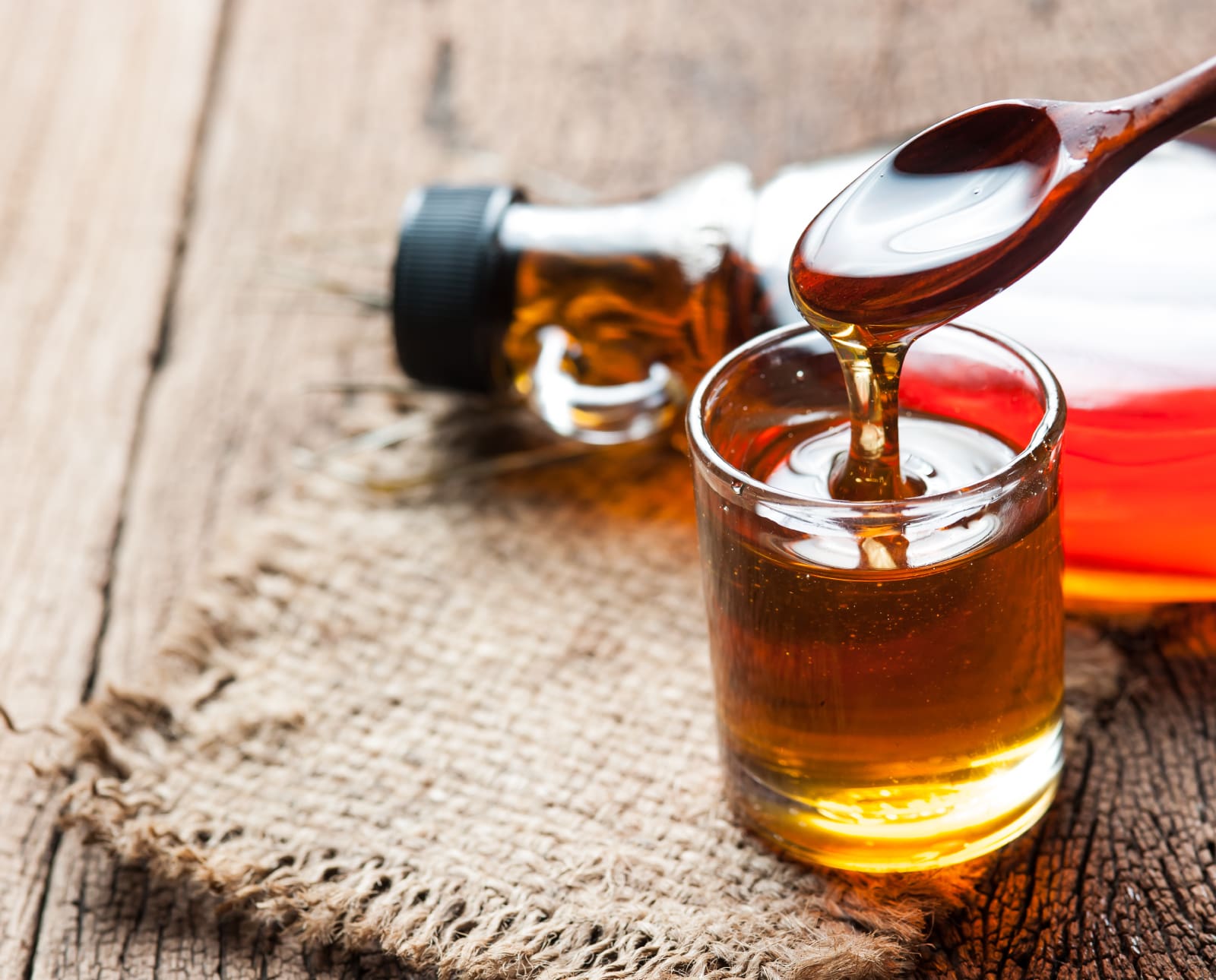
Mark Parman lives in Seeley, Wisconsin, with his wife, Susan,…
Follow this guide on maple syrup making, from Ojibwe legends to tapping tips, and embrace the sweet reward of nature’s labor.
The Ojibwe, the indigenous people of the Great Lakes region, tell a story of how they were starving and aninaatig (sugar maple) fed the tribe with syrup (zhiiwaagamizigan) that gushed forth from its wood. Soon, the people took the gift of sugar from the Creator for granted. They lay under aninaatig all day and just let the syrup drip into their mouths.
Listen to more articles on Apple | Google | Spotify | Audible
One day, the trickster Nanabozho saw this and poured water into aninaatig, diluting the syrup into watered-down sap. He wanted the Ojibwe to work for the blessing of maple syrup and make them truly appreciate it. Today, this is why it takes about 40 gallons of sap and a lot of effort to make a gallon of syrup.
Some days, I wish maple syrup, not watery sap, would gush forth from my trees, but we no longer live in that old, magical world. You have to work to make maple syrup and to do so, you need a few things, like the right sap trees and a way to collect and boil the sap.
There are various ways to make syrup. Some methods are hugely expensive, like those used by big commercial producers who tap thousands of trees. Other methods are much more economical, especially for a backyard syrup maker like me. Backyard Sugarin’ by Rink Mann is a great resource to help you get started.
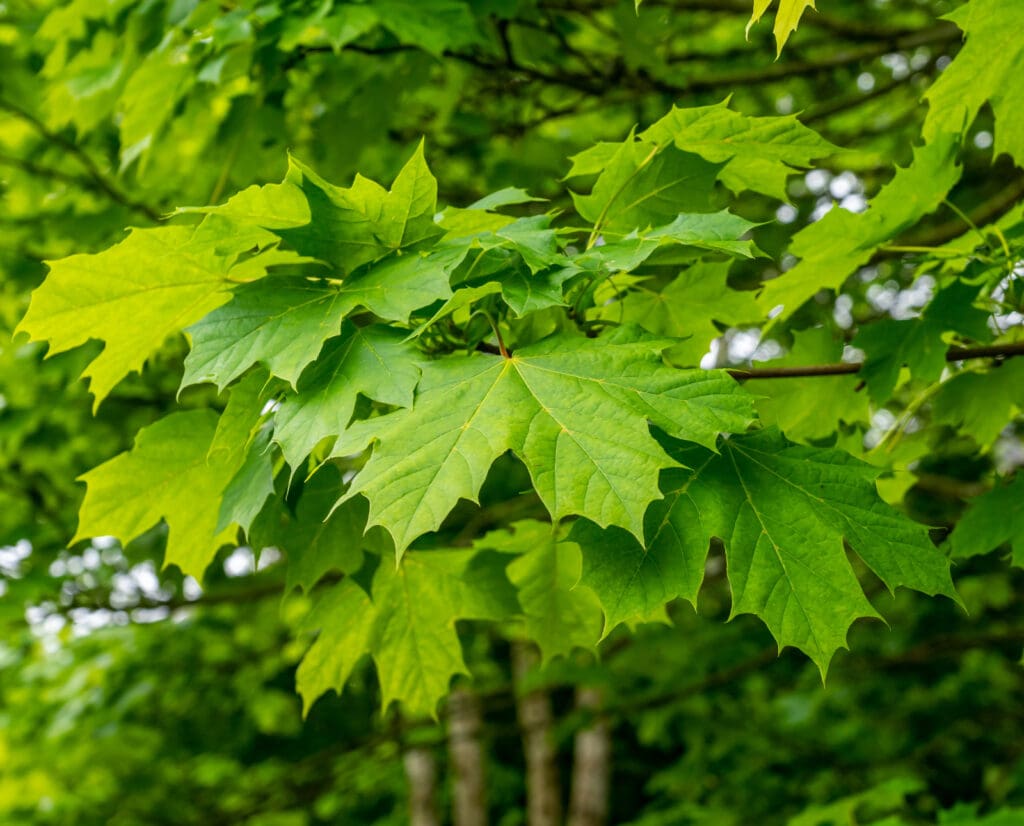
Tree Identification and Tapping
First, you need the right trees. Typically, syrup makers use sugar maples (Acer saccharum), but people also tap their red (Acer rubrum) and silver (Acer saccharinum) maples and box elders. Supposedly, walnut trees make a rich dark syrup, too. In fact, my neighbors tap their white birch just so they can drink the sap water.
When these deciduous trees, other than the birch, are leafless in late winter and early spring, they can be difficult to identify. When leafed out, the sugar maple has distinctively shaped leaves like the one in the center of the Canadian flag. If you know your trees, you can probably identify them without their leaves. Sugar maples have scaly to deeply furrowed bark and send out limbs much lower than, say, red oaks or basswood, which grow much straighter and have narrower crowns. If you can’t identify trees when they’re leafless, mark or map them out in the summer.
Mud season coincides with the sap-running season. This is when the snow starts to melt, the days grow longer, and the sun gets higher and stronger. In northern Wisconsin, this is usually in mid-March. However, this season, our warmest winter on record, I tapped my trees on February 2nd. It was by far my earliest-ever tapping. Last year, in a winter of near-record snowfall, I didn’t tap my trees until April 5th.
Sugar maples run best when the temperature goes below freezing at night and rises above freezing during the day, creating the pressure difference that causes the sap to flow. A low of 25 degrees Fahrenheit and a sunny high of 45 degrees Fahrenheit is just about the perfect day for a good sap run. On such days, most of my trees will run over a gallon.
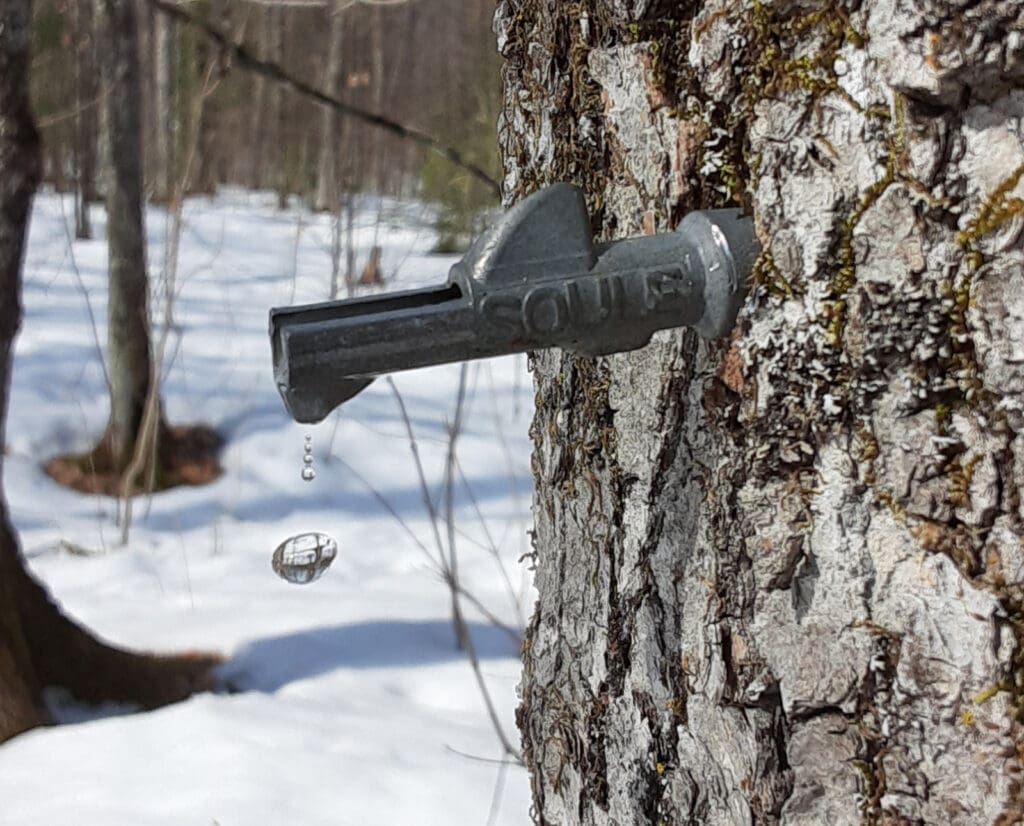
Starting out my first year, I tapped just six trees. I bought my spiles (taps) at a local hardware store, which is possible in maple syrup country. You can also buy them from suppliers online. Tap trees at least a foot in diameter, and if your trees are twice this size, you can put multiple taps in them. I drilled 7/16” holes, which is the diameter of the spiles I use, into the south-facing sides of my trees. These need to be at a slight upward angle and about an inch and a half into solid wood past the bark. If the trees are running, the sap will immediately trickle out.
Many veteran syrup makers swear that one should tap trees when they’re frozen, but you hear all kinds of things from syrup makers. When the maple buds flower out, which ends the sap flow, or if you’ve made enough syrup, you knock out the taps, and the tree will heal this wound over time. My best trees have multiple scars from previous taps. Sometimes, it’s a challenge to find a fresh place to drill a hole.
Tree Sap Collection
Next, collect the sap. Traditional spiles have a hook on the end to hang a bucket or other container. I hang one-gallon plastic jugs, from milk jugs to vinegar containers, which I usually recycle from our neighborhood Dumpster. They’re free and made of clear plastic, so I can see when they’re full. Other syrup makers hang galvanized buckets with lids or plastic bags, both holding at least two gallons.
I empty my jugs into five-gallon buckets, then lug the buckets to my evaporator. With snow on the ground, I put the buckets in an ice-fishing sled and pull them to my evaporator, which is much easier than carrying them while post-holing. If it’s been a particularly snowy winter, I have to tramp down the paths between my trees with snowshoes. I use snowshoes until these trails are hard enough to walk on without them. Large commercial operators use tubes that connect their trees and vacuum pump the sap into large containers that can hold hundreds of gallons. It’s a costly yet efficient way to gather sap.
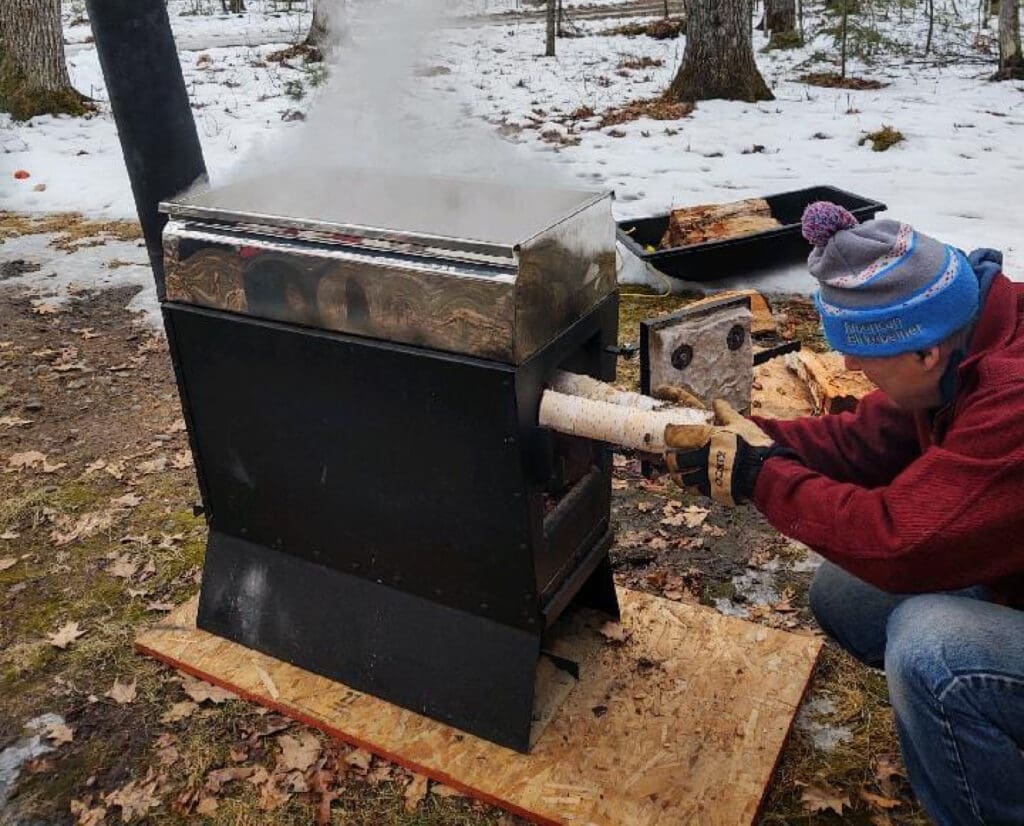
Making Maple Syrup
Once you’ve collected enough sap at a 40:1 water-to-syrup ratio, you are ready to boil. Keep in mind it will take ten gallons of sap to make a quart of syrup. Plastic garbage cans work well for holding all your gallons of sap. It’s best to have a shallow pan that’s 6 to 8 inches deep with a lot of surface area, like a large roaster pan. A large stock pot would also do. You can buy purpose-built stainless steel pans, but they are expensive.
In my first year, I laid half a dozen cement blocks in a rectangle, placed the roaster pan on these blocks, and lit a fire underneath in a gap between the blocks. You can use a lot of different rigs, like barbeque pits, outdoor fireplaces, and gas grills, but I eventually settled on a propane burner. This was much more efficient than my cement block rig, although the gas was costly, unlike the free firewood lying about in my woods. I traded tradition and frugality for efficiency.
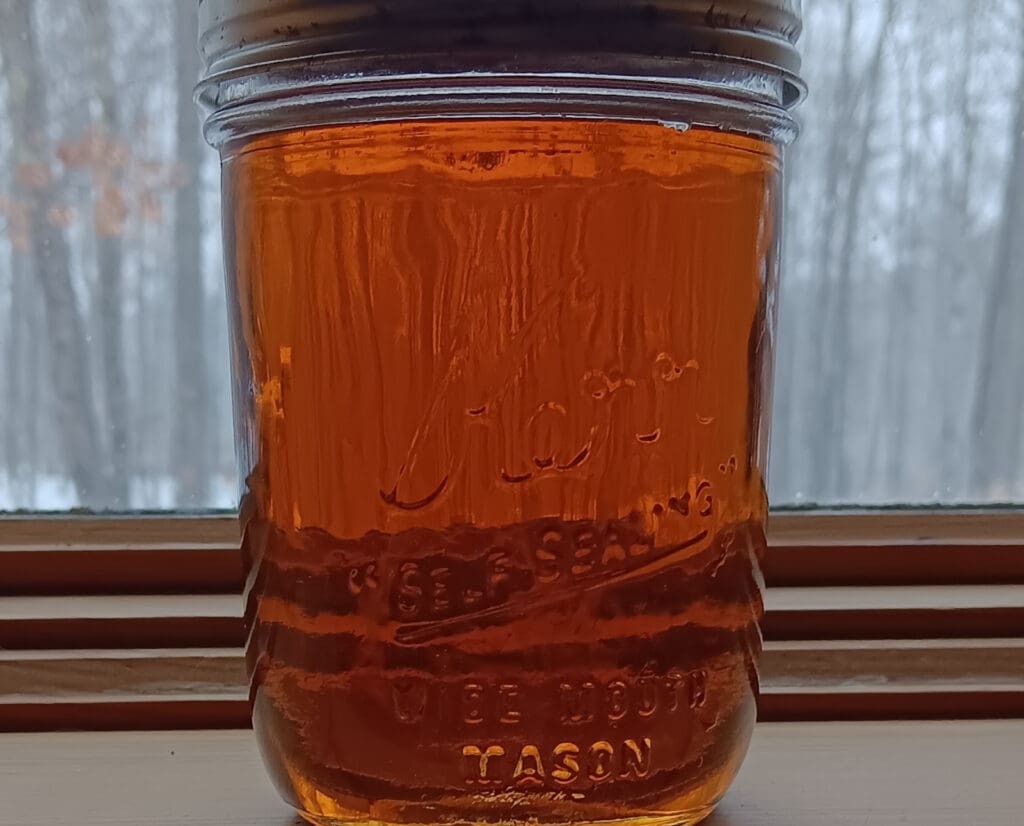
When I’ve boiled my sap down to two gallons or less, I filter it, then bring it inside to finish it on the stovetop. It’s messy but simple. I continue to boil the ever-concentrating sap, which now smells and tastes like maple syrup, and use a hydrometer in a Pilsner glass to measure water content. Others use candy thermometers (7 degrees Fahrenheit over boiling) or an eye test when the syrup rolls off a spatula in a sheet, not in drops. If you boil away too much of the water, you’ll end up with actual sugar and possibly a ruined pan.
After five years of tapping half a dozen trees, we wanted more maple syrup. Those six trees would make roughly a gallon and a half of syrup in an average season, which we went through in a few months. So, we bought a small, wood-fired evaporator (a Smoky Lake StarCat) with an 18” x 30” X 6” pan that handles about 30 taps. It can boil off seven to eight gallons of sap per hour, and if I burn it hard all day, I can boil off 50 or 60 gallons and make over a gallon of syrup. That was very close to my previous yearly output. This was a significant investment, but with maple syrup going at fifty dollars a gallon, it has paid for itself.
I used to dread mud season, those dreary, gray weeks between winter and true spring, but now it’s one of my favorites. There are not a lot of things I’d rather do than sit in the warm spring sunshine drinking a beer while my evaporator hums away, making one of the sweetest substances in the world. Most days, I’m glad Nanabozho watered down our sugar maples.
Recommended Maple Syrup Equipment Suppliers
Mark Parman lives in Seeley, Wisconsin, with his wife, Susan, and setters, Fergus and Jenkins. He has written two books about ruffed grouse hunting: Among the Aspen and A Grouse Hunter's Almanac. He still enjoys a good paper map.



